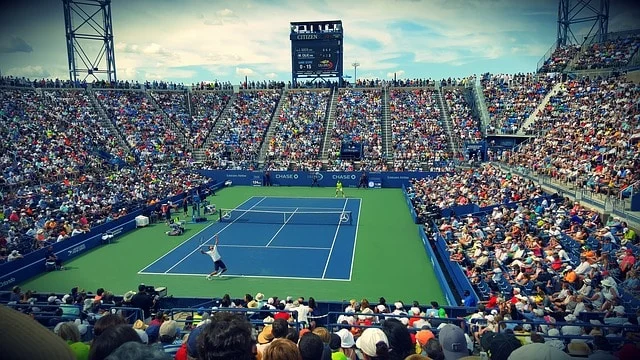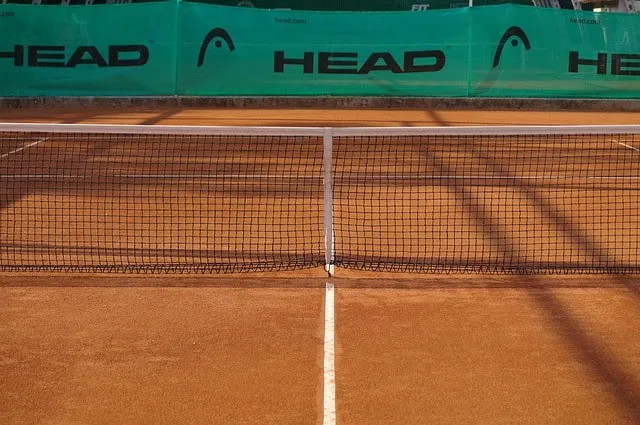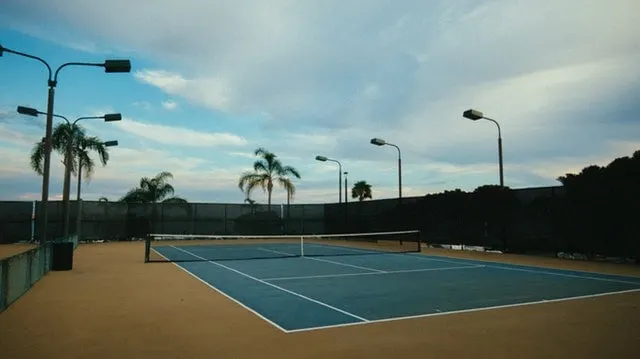
The other day, I noticed that someone had a tennis court in their front garden. It was secluded a bit from the trees, but I could still make out the net and fence.
It got me thinking about how to build a tennis court yourself, in your own garden.
Of course, this is just a pipe dream for me as my entire garden is about the same size as half a tennis court!
But for wealthier individuals, having your own one must be pretty awesome.
For this blog post, I thought I’d look into the process of building your own tennis court.
Do you need planning permission for a tennis court?
In short, it depends.
Here in the UK, if you have a big garden, the good news is that you usually don’t need planning permission as you’re building something on your own land. However, there are some instances where there are exceptions:
The following exceptions apply to the UK so if you live in another country, please contact your local council for more information.
Change of use of the land
If the land is currently being used for farmland, then installing a tennis court changes how the land is being used, and this does require permission.
Do you need floodlights?
The law states that you need planning permission if you’re installing lights above ground level. This certainly makes sense as if you have neighbours nearby, floodlights can easily cause disruption and annoyance in the evenings with strong light pouring through people’s windows!
Do you live in a conservation area?
If you live in a conservation area, you’ll need to contact your local council and ask about your plans for a tennis court. In the UK, a lot of these areas are well protected and you may have some issues with your building plans.
Does your home have specific building restrictions?
For some older properties, including those that are heritage listed, you will definitely need planning permission to build a tennis court.

How much space do you need?
Surprisingly, the entire space you need to build a tennis court hasn’t actually changed much since the late 19th century.
For a standard tennis court, the maximum size you’ll need is 120’ x 60’ which would be the tennis court plus the outer area enclosed by a fence. However, you can get by with a total area of 108’ x 54’
If you only need a singles court without the tramlines, the width can be reduced even further from 54’ to 45’.
Choose the right tennis court surface
You have lots of choice when it comes to different tennis court surfaces and they all have their own advantages and disadvantages
Here are a few things to consider:
The pace of the court
Grass is the fastest surface and the ball can really skid through the court after the first bounce. Clay courts are slower and hard courts are somewhere in between.
Maintenance
Grass courts are very high maintenance as you need to ensure the grass is in the right condition to be played on. You’ll need to water and mow it regularly, and the surface can damage easily if you play on it regularly.
Clay courts also need to be maintained regularly to get rid of marks and ensure the court is smooth.
Hard courts are the easiest to maintain, and apart from the occasional pressure washing and painting lines, you don’t have to do much with this surface to ensure you can have a good game of tennis.
Bounce
The bounce on clay and hard courts are generally quite high, where as it can be unpredictable on grass courts.
Ease on the body
Due to the hard concrete or asphalt surface on hard courts, this surface type is the hardest on your body. Playing regularly on this surface, especially competitive matches, can take its toll on your knees and hips. Clay is the softest surface and it’s generally the easiest on your body.
Which surface is the most popular?
Hard courts are the most popular surface. Although it’s a little tougher on the body, for most recreational players who aren’t playing every day, it shouldn’t be much of an issue.
But the biggest advantage is how easy this surface is to maintain. Grass courts are becoming far less popular because of the cost and time required to maintain them.
However, just bear in mind that these days there several variations within these 3 main surface types. You can get synthetic grass, and some other types of hard and clay courts. Some of these surfaces can dry out faster than others (something to think about if you live in a country with a lot of annual rainfall), some have better grip on wet and damp surfaces, and some are more comfortable to play on.
Take your time to choose the best surface for your dream tennis court!

How much does it cost to build a tennis court?
The cost can vary a great deal depending on the surface type, the total area needed and where you live.
In the UK, prices generally start from around £25,000 up to around £100,000. In the US it’s around $25,000 – $100,000. The price can really shoot up if you want a truly high end tennis court.
It really is a big project when you think about everything that’s involved. Take a look at this video showing an overview of the whole process
What else should you consider when building a tennis court?
Here are some other important considerations:
What direction it should face
Ideally, the court should face north/south as much as possible. As the sun rises in the east and sets in the west, this will minimize playing into the sun early in the morning or in the evening/late afternoon.
Soil conditions / Drainage and sloping
Solid foundations are essential and different soil types can have a big factor on what the contractors need to do underneath the tennis court surface. Clay soil will tend to retain the water a lot and the drainage will need to be very good. However, a sandy soil type will help the drainage of water a great deal.
Furthermore, if there is a significant slope on the site then it will take longer for the contractor to prepare the ground prior to the actual construction of the court. In some cases, retaining walls may be required.
Color scheme
Think about the color scheme carefully. You want one color for the court itself, and a contrasting one to surround it. For obvious reasons, yellow doesn’t make a good choice. For hard courts, the colour of choice used to be green, but in more recent years blue has become more fashionable.
Find a reliable and highly rated contractor
This goes without saying. Building a tennis court is an expensive project, so do your research carefully. It’s probably advisable to check other tennis courts a contractor has built so you can see the quality of their work in person.
